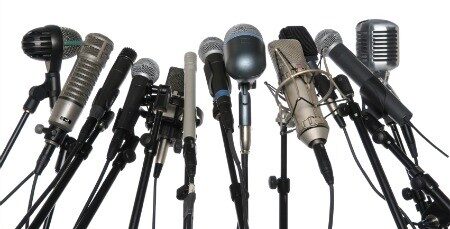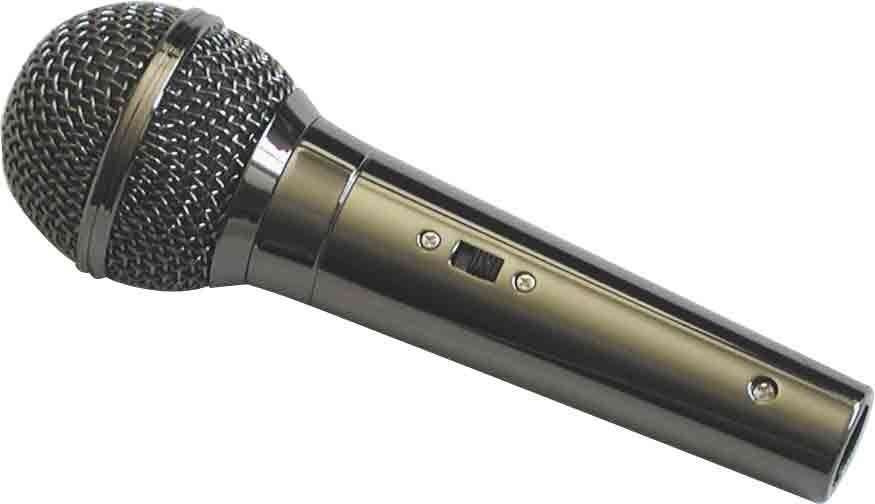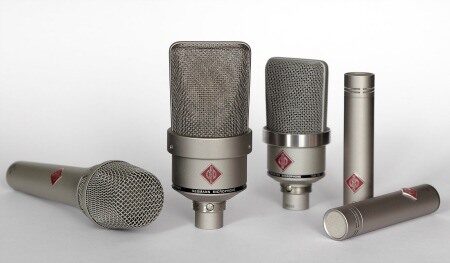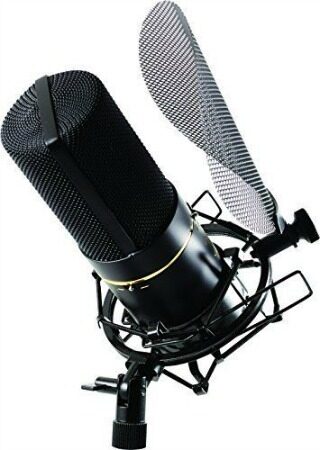If you’re shopping for the best studio microphones, you have probably come across a wide array of products. Each of them has a list of specs and features that make the decision-making process altogether more difficult.
While to some extent, is it true that the price of a microphone might illustrate its performance and potential, this isn’t the only criterion you should consider. Comprehending how distinct microphones work is a must – which is what we’re here for.
This buying guide incorporates the information you should have to purchase a microphone that will definitely improve your recordings. On top of that, we will present to you five top products we have earnestly tested for you!
*Notice: On mobile devices, scroll right to see entire table.
Why Should You Choose Your Studio Microphone Carefully
Purchasing the best studio microphone plays a crucial role when it comes to recording. That applies in all cases, no matter if you’re recording in a home or a professional studio.

Widely speaking, your intention is to create the best mixes. Evidently, the microphone you choose will either make your sound stand out or the opposite. An excellent recording is the one that delivers clear, crisp sounds.
Things To Consider When Choosing Your Studio Microphone
If you want to find out how we narrowed down the immense pile of studio microphones to the five reviewed above, the upcoming list will definitely clarify that.
Here are the main considerations that should guide you in your search for getting the best studio microphones.
Durability
Without a doubt, you want to purchase a microphone that will stand the test of time. Therefore, we carefully considered this aspect before reviewing the products above.
To that end, the items we recommended are durable, featuring a solid construction and design. Make sure you factor this in during your search, as well.
Pay attention to the material used in the manufacturing process, as well as the dimensions, height, and weight of the microphone.
Type: Dynamic vs. Condenser
Another major consideration is choosing between dynamic and condenser mics. Obviously, before making a choice, you should know what each of these does, right? Let’s have a look.
Dynamic Mics
Dynamic microphones are surprisingly durable while being resistant to moisture and handling. As a result, they are better fitted for onstage use. In comparison to condenser mics, dynamic mics work by electromagnetic induction.

Benefits
- Durable and solid construction
- Inexpensive
- Recommended for recording loud instrumentation and sounds, including amplified guitars or drums
- The low sensitivity means that the microphone won’t pick up distant sounds
Pitfalls
- Low sensitivity, particularly at high frequencies
- The flat recording range translates into a flat audio
- The microphone is less likely to capture the details in sounds
- Poor response
Condenser Mics
Typically, most studios are equipped with condenser mics. That’s primarily because they feature excellent frequency response. They also have an excellent capability of reproducing the actual sound of the voice or instrument.
The primary reason why condenser mics are widely used in studios is their increased sensitivity to sounds. In other words, such an item is due to pick up background sound, if present.

Benefits
- High sensitivity equals excellent response at high frequencies
- The recordings are clear and crisp
- Recommended for recording vocals
Drawbacks
- Can be more expensive than their counterparts
- They require phantom power
- The high sensitive could minimize the quality of the performance if the recording environment isn’t echo and sound-proof
XLR/USB
Moving on to the type of connectivity, you may choose from XLR and USB. That being said, USB microphones will draw power from the device you connect them to – tablet or computer.
This aspect might lead to complications, especially if your device doesn’t supply enough power.
Concurrently, it could cause battery drainage.
On the other side, there are microphones that use a traditional XLR connection. Hence, such items necessitate phantom power, which is normally provided by your audio interface or mixing desk.
Polar Patterns
In the simplest terms, the polar pattern represents the shape of a microphone’s field of sensitivity. Or, in other words, the direction from which it is bound to capture or ignore sounds.
To begin with, unidirectional microphones are the most widespread. They are separated into three categories: cardioid, hyper-cardioid, and super-cardioid.
The cardioid pattern is highly sensitive to sounds coming from the sides and the front. At the same time, this pattern rejects sounds from 180 degrees opposite from where the microphone is aimed.
Moving on to the super-cardioid microphone, it is less likely to capture the sounds coming from the sides. As for the hyper-cardioid pattern, it won’t pick up sounds that come from 90 to 120 degrees.
Various microphones are multi-pattern. This means that you can alter their polar patterns. Evidently, this is an excellent feature that increases the versatility of an item, making it usable for numerous settings.
It’s worth noting that polar patterns are of utmost importance, especially when you’re working in a noisy setting. So, cardioid, super-cardioid and hyper-cardioid patterns will do a decent job at excluding unwanted noise, highlighting the voice of the singer.
Frequency Response
The next thing that you should consider is the frequency response, which ranges from high to low. Additionally, the frequency is measured in Hertz.
From our experience, a microphone whose frequency response rate ranges from 80 Hz to 15 kHz would be a decent alternative for a vocal mic.
Nevertheless, if you plan on mixing various instruments, we have a different suggestion for you. You should look for a mic with 50 Hz frequency rate, or lower than that.
Diaphragm
Condenser and dynamic microphones are categorized according to the size of the diaphragm. To that end, small diaphragm microphones deliver a neutral, uncolored, surprisingly detailed sound image.
We could say that small diaphragm mics are realist. They capture the sound just as it this.
On the other hand, large diaphragm mics are part instruments, part microphones. Their purpose is to deliver a full, rich sound.
Simply put, they will provide that recorded sound.
These are best fitted if you want to spotlight vocals or lead instruments.
Best XLR Studio Microphone
Here’s our recommendation for the best studio microphone:
Winner – Electro Voice RE320 Studio Microphone
We’ll start with one of the very best studio microphones, namely the Electro Voice RE320 Studio Microphone. Electro Voice has started manufacturing top-of-the-line microphones in the 1930s, and our preferred pick is one of their best-selling items.
To begin with, it has a classic, aesthetic appeal. It has that typical vented chassis we really like. Also, the semi-gloss finish gives it a nice touch.
Moreover, the RE320 is characterized by a Variable-D design, featuring various side vents and acoustic pathways. These have the purpose of reducing the proximity effect as well as off-axis coloration.
Nevertheless, bear in mind that we did say reduce. In other words, it doesn’t eliminate the proximity effect altogether, which could be seen as a drawback. Even so, in comparison with most dynamic microphones in the same price category, this does a decent job.
Our Rating
We also like that the microphone is surprisingly quiet. That is definitely a good thing. It doesn’t release any hiss, hum or noise.
It is equipped with a small switch that allows you to choose the flat frequency response. You may use that with vocals and instruments. Concurrently, you may pick a different frequency response that is specifically targeted for kick drums.
Vocal-wise, we could say that the microphone delivers an outstanding performance. The sound was crisp and clear, just as we expected it to be.
Another aspect worth mentioning is the excellent build quality of the mic. In fact, the manufacturer is widely renowned for producing surprisingly durable microphones that may be used for many years to come.
In other words, you’ll definitely get your money’s worth, in the long run.
The bottom-line is that this product is one of the best studio microphones for the buck. It is versatile, broadcast-worthy, and the variable D proximity effect control is the perfect addition.
Last, but not least, the fact that this microphone can deal with the abuse of rock n roll is a major plus.
To that end, we are definitely eager to recommend you getting this microphone!
- High-quality, crisp sound
- You may also use it to record serious rock n roll
- Useful Variable D proximity effect control
- Its durability
- It comes at a great price
- It is a bit lightweight, which would require investing in a high-quality microphone stand.
Runner-Up: MXL Studio Microphone
The next item on our list of recommendations for the best studio microphones is the MXL Studio Microphone. The primary reason why it reached our list is the flexibility and performance it offers.
It has a set of excellent features. The most noteworthy of them all is the large diaphragm gold-sputtered capsule that captures the sound with excellent clarity and detail.
What is more, you can choose one of the three polar patterns: figure eight, cardioid and omnidirectional.
Thanks to this unique multi-pattern design, you can utilize the 770X for recording both instruments and vocals. Simply put, this mic is due to meet all your recording needs.

For example, the cardioid polar pattern does an amazing job at capturing the sound coming from the front of the microphone. Concurrently, it rejects the sounds coming from the back of the microphone.
On that note, we would recommend selecting this pattern when your intention is to pick up specific sound sources. The good thing about this option is that, when you select it, the mic is less prone to pick up ambient noise from recording equipment – which is a major advantage when it comes to home studios.
On the other hand, the omnidirectional pattern will capture the sound from all the sides of the mic. Therefore, we advise you utilize this pattern if the recording environment features excellent acoustics. That’s primarily because this pattern will definitely pick up ambient noise.
On the whole, by taking a comprehensive look at this microphone, we could argue that it delivers consistent performance.
An unmatched pro is that it comes at a decent price, as well. In other words, if you choose this item, what you’ll get is a balanced, crisp and clear sound quality.
- Outstanding sound quality
- Sturdy build
- It comes with a vibration mount and case
- Low noise floor
- Picks up a wide range of frequencies
- The shock mount isn’t the best
Alternative – Audio-Technica Studio Microphone
The Audio-Technica AT2020 Cardioid Condenser Studio Microphone is another excellent product. Presumably, the most considerable pro is that it offers good value for the money. Thus, if you’re on a tight budget, this microphone could be a decent option.
To begin with, thanks to its broad frequency response, it delivers a good flat response. Concurrently, we appreciate that the sound is full, warm, without any harshness attached to it. That makes it an appropriate option for both male and female performers.
At the same time, it does a decent job with recording instruments. That makes it a versatile microphone, which is another advantage.
Our Rating
As a matter of fact, when we tested the microphone for recording acoustic guitar, we were more than impressed with its performance.
As for the proximity effect, it is kept at a minimum – also a good thing.
Considering that the SPL rating is 144 dB, this microphone is expected to easily cope with most sources. At the same time, note that the signal to noise ratio is established at 74 dB, while the self-noise ratio is of 20 dB SPL.
That being said, the self-noise ratio is pretty high. In other words, while the mic would remain suitable for most recordings, if self-noise is an issue to you, you should choose a different product.
However, we can say that the smooth response of the microphone is an excellent feature. Simultaneously, given the fact that it is super sensitive, it is mandatory to set up your home studio accordingly.
Moving on to the dimensions of the mic, we could argue that it is a nice compromise between durability and compactness. So, this microphone is definitely durable, while not being overly heavy.
Altogether, if you’re on the lookout for the best studio microphones with practical design and decent flat reproduction, the AT2020 will be down your alley.
Nevertheless, the notably high self-noise won’t be pleasing to all users. So, make sure you consider this aspect, as well.
- Solid construction
- Flat response
- It captures clear sound
- Good value for the price
- No shock mount
- It can be a tad noisy
Best USB Studio Microphone
Here’s our recommendation for the best USB Studio Microphone:
Winner – Blue Yeti USB Microphone
If you’re looking for the best studio microphones, the Blue Yeti Microphone delivers outstanding performance. Additionally, the price-quality ratio is the main aspect that makes this product one of the very best.
At first glance, the microphone might seem a bit oversized, especially if you didn’t have a home studio microphone until now. It features a durable construction, being made of solid metal.
Nevertheless, note that the control buttons are rather flimsy. This is, perhaps, one of the drawbacks of this product. That’s why we advise you to maneuver them carefully, especially if you want to prolong the lifespan of the mic.
Now let’s talk about the microphone’s capabilities, shall we? On that note, the Blue Yeti microphone delivers a surprisingly rich sound.
Nevertheless, considering the increased sensitivity, you should know that the microphone is likely to pick up unwanted sounds, as well.
Even so, after thoroughly testing the microphone, we can say that by correctly positioning the microphone, you can accomplish a decent level of noise cancellation.
For example, let’s say that the source of the noise is located behind the microphone. In this scenario, we advise you to use the cardioid pattern.

Source: newegg.com
Our Rating
However, if the noise is outsourced from the sides, the bidirectional pattern will be the best choice.
At the same time, if you plan on recording acoustic guitar, you’ll become fond of the stereo mode. We like that this mode makes the sound incredibly natural.
Another aspect that definitely places this microphone above its competitors is the THX certification. In truth, this was the very first mic that earned the certification.
The certification merely outlines that the user will get excellent sound quality. At the same time, it warrants that the frequency range is just as it should be.
In spite of that, the product isn’t short of pitfalls. As a general rule, condenser microphones are fickle when it comes to environmental noise. Although this particular item delivers an excellent cancellation rate, some users may still find it unsuitable.
Still, in order to eliminate unwanted sounds, some prefer using a shock mount. Nevertheless, the problem is that the microphone has non-standard dimensions. That will make it difficult to find a shock mount that fits.
Now let’s draw a line here. On the whole, the microphone is a good option for recording voice and instruments. You get an excellent mic that is effortless to set up and that delivers professional performance, at a surprisingly low rate – what more can you ask?
- THX certification
- You can choose from 4 picking patterns, stereo mode included
- Durable full metal body
- Affordability
- Rich and excellent sound quality
- You don’t require setting up equipment
- Non-standard size makes it difficult to find an appropriate shock mount.
- The control buttons are rather flimsy
Runner-Up – Samson USB Studio Microphone
The Samson Meteor Mic USB Studio Microphone is an excellent option if you want an item that balances portability and functionality. And the best part about it is that it delivers sublime recordings.
The stylish, retro-inspired design is another selling point. Not only that it looks surprisingly cool, but it is incredibly solid as well.
The microphone comes accompanied by a velvet bag. You can use that to protect the microphone from unwanted scratches and light knocks.
The mechanisms of the legs seem durable as well. Just as you’d expect from a professional studio microphone.
Our Rating
We also like that you may choose to plug the headphones directly into the mic. That is excellent for real-time monitoring.
At the same time, you can regulate the volume on the headphones. Nevertheless, controlling the recording volume from the device isn’t a possibility; you’ll need to use some kind of software in this respect.
There is also a LED that indicates when the device is powered. It also shows if the pushing levels are seemingly higher than they should be.
What is there to say about this microphone’s performance level? We would have to admit that we were fairly happy with its performance.
It does a good job at recording both male and female voices, piano, electric and acoustic guitars, and even heavy metal vocals. From this point of view, this mic will definitely meet its purpose.
Nonetheless, the lack of an XLR output and onboard gain control could limit some users. So, make sure you take this into consideration, as well.
Our verdict is that the Samson Meteor Mic could be regarded as a high-quality USB studio microphone. It is easy to set-up and use, portable, and delivers excellent sound quality. And it offers all these at an affordable price!
- Stylish design
- Portability
- Good audio quality
- Easy set-up process
- No analog output or gain control
- The sampling rate isn’t the highest
Conclusion
All things considered, we hope that after reading our guide on the best studio microphones, you’ll know where to start your search. Remember, there’s no such thing as the best product for all scenarios.
Obviously, you should choose according to your needs, specifications, and budget. Make sure you take into consideration aspects such as durability, the type of microphone, and the recording it’s suited for, frequency response, diaphragm, connectivity and polar patterns.
At the same time, you can definitely rely on our product reviews, since they are the result of hours of research and testing.
If you have any questions or thoughts on the topic of choosing a recording studio microphone, use the comment section below! Happy recording!

